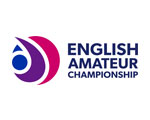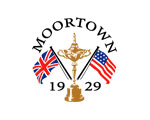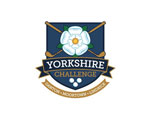England name team to face France at Moortown
WHS Handicap Update for Club Members
2024 Rules of Handicap update for club members
On the 1st of April 2024, The changes to WHS™ Rules of Handicapping & Course Rating™ standards will take effect in England, Scotland, Wales and Ireland. Your Club handicap committee are the first point of contact for any WHS™ queries. They have access to the required resource(s) and tools to ensure they can support the membership at their club. To ensure the golfer understands the impact of the changes on their game, below is a summary of each change.
Club Profile – James Wadsworth
Club profile – James Wadsworth
Our Assistant Professional on his golfing background and making a spectacular two at Moortown’s 18th
How did you get into golf?
I first got into golf because of my Dad. He was a scratch golfer and played regularly at the time. I started at 8 at our local pitch and putt, Tapton Park, near Chesterfield. Three years later I had worked my way up to be allowed to play on the main course where I got my first handicap of 23. After lots of lessons and spending day after day at the club in the summer holidays and, by the time, I turned 14 I was down to 7 and playing regularly in men’s competitions. Over the next few years I would go on to represent and Captain my county at U16 U18 Level. I finished my junior career off a handicap of 1.
How did you make the transition to becoming a Professional?
After school, I attended the East Midlands Golf Academy based at Morley Hayes GC while also attending college. Looking back these were the best three years of my golfing career as I felt like a full-time golfer. We would study Monday and Tuesday and then spend Wednesday to Friday at the Academy working with various teaching Professionals on technical changes. We also had personal trainers working with us in the gym and psychologists for the mental side. Every box was ticked to give us the best chance to enhance our game.
What was your favourite aspect of the course?
Throughout the winter we would go warm-weather training in Spain for two weeks just before the golf season to give us the chance to practise and play daily when the rest of the UK was normally under water. These trips are some of my favourite golfing memories. Throughout the golfing season, every other week we would have various college events to prepare for across the country against other colleges and academies. I loved competing and I loved the team elements in these events. After I finished my college golf, I started working at Shirland GC where I spent three years and in my final year there I began my PGA training under the tuition of Head Professional Craig Swinburn.
Who have you taken from your PGA training?
I really enjoyed the physical work in the gym learning about the body and how it affects the swing in different ways. I enjoyed the coaching work on residentials, especially when we were observed and examined. I felt a step ahead of the game as I was being taught by various different coaches which helped me gain a lot of knowledge and experience. I then moved to Lees Hall GC where I finished my PGA qualification and I worked alongside Andy Rossington who had previously worked for Pete Cowen Golf Academy in Dubai. I would say my time working with Andy fuelled my passion for teaching. I now have significant coaching experience after regularly teaching private lessons, running junior sessions and coaching TRI golf sessions in primary schools. From there I made the move to Moortown in May 2021.
What should a first lesson look like?
A first lesson should be more of an open chat about your game, talking about your weaknesses but also more importantly your strengths. From there we will work out a plan of action. Everybody swings and moves the club differently so it’s all about maximising the consistency and repeatability through impact. Setting short and long- term goals is key for a coach and athlete relationship.
What are the biggest flaws in members’ golf swings?
They don’t use the ground and their legs well enough. The best players on tour use the ground to enable them to hit the ball as far as they do. Too many amateurs are trying too hard to ‘swing’ the club at the ball causing timing issues, weak ball flights and inconsistent contact.
What are your favourite swings on Tour?
Max Homa, Cameron Young and Matt Wallace….Tempo Town!
If you could have a lesson with anyone tomorrow who would it be?
Pete Cowen – he’s worked with the best players in the world and I love is coaching methods and philosophy. The spiral staircase ideas and how to load the body better has changed my game and how I teach players. I would love to pick his brains on other ways and methods he uses with other top-class players.
Who would be in your dream fourball?
Tiger Woods, Conor McGregor and Kevin Hart.
What is your favourite hole at Moortown and why?
The 12th. It’s a great risk-reward par 5 and, with it normally playing downwind, it gives you a great chance to open up the shoulders and send one.
What’s your lowest ever round?
I had a 66 (-5) at Retford GC in an Inter-Collegiate Tour event.
Safeguarding Policy & Procedures

At the General Committee meeting of 22 January 2024, Anne Weston was duly appointed as the Club’s new Welfare Officer.
To view the Club’s safeguarding policy and procedure documents, please follow the below links –
MGC Child Safeguarding Policy and Procedures
MGC Adults Safeguarding Policy and Procedures
Club Welfare Officer – Anne Weston
Contact – [email protected]
GEO Certification Re-Awarded To Moortown
Moortown has been re-awarded the Golf Environmental Organisation accreditation for its outstanding work to foster nature, conserve resources and support the community. The club has been certified since 2018 and it is renewed every five years.
GEO Certified is the most respected certification for golf, based on a credibly and transparently developed modern sustainability standard of best practice.
“Moortown is an excellent example of a club whose operations are managed sustainably. The maintenance of cool season grasses, minimising the use of water, fertiliser and pesticides as far as possible, is laudable. The high-quality heathland restoration, which is ongoing, mark the club out as a leader in environmental good practice on the course,” explained the GEO.
“In addition, their drive to reduce resource consumption and increase energy efficiency, across all their operations, adds to their impressive demonstration of what golf clubs can do to deliver sustainable outcomes. We commend their efforts,”
The club was reported to have met the required certification criteria for sustainable golf operations, successfully completed the official third-party verification process and passed the final evaluation by GEO Certification Ltd.
The aims of the GEO are to further improve golf’s social, environmental and climate contribution, enhance the game’s image, reputation and resilience and to help golf fulfil its potential to inspire and guide millions of followers. The not-for-profit organisation was established over 15 years ago with the sole purpose of helping accelerate sustainability in and through golf.
The Club is understandably proud to have the GEO re-verification and is delighted that this national accreditation recognises the outstanding work of Course Manager Steve Robinson and his staff in terms of the environment.
Club Profile – Annabel ‘Annie’ Bailey
This year Annie Bailey joined Moortown as the new Assistant Secretary/Manager. We spoke to her about her golfing journey and her talented family
You come from a family of golfers?
My Dad Ian is a PGA professional at Kirby Muxloe in Leicestershire. My sister Lianna plays on the Access Series on the Ladies European Tour, my sister Jess is off +3 and wants to turn pro, she’s at college in the States, and my other sister Ellie is at university in Leeds and she plays off 3. My brother George is in his first year at York and he’s off 3 as well. And I play off +2. My Mum gave it a go but much prefers watching it! Golf was the only thing that I knew growing up and the dream was always to turn professional.
What level did you get to?
I played competitive golf throughout my junior years during primary and secondary school. During that time, I went from county to national and eventually international, representing England Girls in the Europeans and Home Internationals. Unfortunately I don’t play as much as I would like to now and I haven’t played competitively (properly) for a few years but I still love it. When I get out on the course it’s more of a social setting these days.
Where have you worked before?
I didn’t go to college in the States and I just got into full-time work. My first job in golf was at Moor Allerton where I worked in the pro shop and did bar work, then a friend saw an advert for Sand Moor and I went there as the Assistant Manger in 2021. In March this year I was offered a job within England Golf to become a Tournament Manager but I soon realised that it wasn’t a career I wanted to pursue. I joined Moortown in the summer where I look after a lot of the golfing admin. If the phone ever rings then I’ll always answer it first. So that might be the reciprocal requests, taking bookings and, at this time of year, dealing with new members and subscriptions. There’s always something different, at the moment we’re running a women’s winter package you can play for four months for £300.
What do you hope to bring to the club?
I would like to think having knowledge of golf on and off the course means I can contribute to new ideas and help to continue improving the club. I’ve been a junior and a girl junior at a golf club and I’ve discovered that it’s not just about the golf, it’s the friendships that you build. I’ve made a lot of friends because of golf and I think it’s such a good sport for that and I’d like to try and promote it though that. My sister Ellie went through a phase where she didn’t want to play when she was still a junior as it was all boys and it switched her off from the sport. Now she’s older and it’s different but, when you’re young, you want to be completely comfortable. The higher up you get, there are loads of girls but to get girls, and women, into golf in the first place you need to focus on the friendship side.
What’s your favourite hole at Moortown?
It always changes but right now it’s the 4th – I played Moortown one evening this summer and the sun was setting. As I walked from the 3rd green to the 4th tee, I looked down the hole and was taken back by how pretty it looked in that light. To be honest it was something that I hadn’t appreciated before and normally my favourite holes are par 5s. The mounds and the bunkering just looked so good. It really helps to play here as you then know how the course is playing for any visitors, what changes are taking place and what the members are talking about. I used to be a member at Hollinwell and I would describe Moortown as similar to there, it’s not the same in some ways but it has some similar characteristics.
How would you describe your golf game?
I am very much a ‘hit driver everywhere’ kind of golfer. My driver is my comfort go-to club in my bag. Although I don’t play in competitions, I still like to get out when I can to keep the golf going as much as possible and I am lucky to have my partner who plays professionally so we will play regularly. I had the pleasure of playing Moortown recently which turned out to be a round I won’t forget any time soon. The company with the ladies was great and my golf made it that bit more enjoyable shooting a new personal best of 9 under. I had no idea what I had scored until I sat down with a card and pencil after and it was a pleasant surprise to see it add up to 66.
Club Profile – Jake Rose
This year Moortown greenkeeper Jake Rose was the runner-up at the Young Student Greenskeeper of the Year Awards. We spoke to him to find out about the award and his work at the club.
What is your greenkeeping background?
I had just turned 17 when I started. After Covid I started playing a lot and wanted to work on a golf course and be a part of it. I got a job at Wakefield GC and was an apprentice there, I did my Level 2 and spent just short of two years there. I really enjoyed going to work and I loved finishing at 2pm every day and then playing as much as I wanted, playing different courses and meeting different people. My step-dad has worked at Moortown for 10 years and I spoke to Steve (Robinson) and I was offered some work at the club. I originally came to Moortown for six months in September 2022 so I could finish my qualification and they asked if I would like to stay.
How did you get nominated for the Toro Young Student Greenskeeper of the Year Award this year?
The idea is that you’re doing a qualification at the time so I applied at the start of the year. Then in June I had a Zoom interview in the clubhouse and they then picked the best six out of the country from a pool of around 120 who had entered. I then found out that I had got to the final which was obviously a massive thing for me.
Why do you think you were picked?
Anyone can know as much as I know and some will know more than me but I can have a conversation with people and talk my way through it. When you apply have to have someone sponsor you so Steve put me forward as well as Jack Rank, who used to work at Moortown and was my tutor at Askham Bryan College. Then it was down to me. In the initial everyone got the same questions and there was a wide mix of questions so you had to be well prepared.
have someone sponsor you so Steve put me forward as well as Jack Rank, who used to work at Moortown and was my tutor at Askham Bryan College. Then it was down to me. In the initial everyone got the same questions and there was a wide mix of questions so you had to be well prepared.
What did the final at Carden Park consist of?
We has two days there, the first day was getting to know one another and was fairly relaxed. There was a course walk with Peter Pattenden who is the Estates Manager there and who had won the award last year. Then we did some activities and and that evening Peter did a speech and a Q&A. The following morning we had breakfast at 7.30, which was a massive lie-in, and then at 8.30 we had a written exam for 45 minutes which was purely greenkeeping knowledge.
Then we had to identify nine different grasses which was tough. They made it as hard as possible as the prizes were so good and there was no chance of fluking anything. Then we did a hole walk where we talked about what we would do to improve the hole and what we would work on.
Then by 3pm we had to complete a special project where you had to design a bit of greenkeeping machinery that we thought would benefit the industry. So there was plenty to do and at 6.30 that evening we met up for the awards and I was made up to finish as the runner-up.
What does the runners-up award get you?
The winner gets, among other things, two weeks’ work in France while the winner of the main award can work in America for 10 weeks. I received a trip to Continue to Learn at BTME, which is the premier turf management exhibit in Europe, plus a £300 Toro training voucher for a course of my choice. I’ll do a mechanics course in St Neots which work well with what I do at Moortown.
What do you enjoy about working at Moortown?
 The club have been so supportive throughout this and they bought me a chainsaw this year. People think that it’s nice to sit on a mower in the summer months but, at this time of year when you start digging and changing stuff, I really enjoy doing that. The 3rd hole was my first project and there are some exciting changes in the coming years. We’re now working on the 15th and it might be like that for 100 years and you’re part of the team who are doing that.
The club have been so supportive throughout this and they bought me a chainsaw this year. People think that it’s nice to sit on a mower in the summer months but, at this time of year when you start digging and changing stuff, I really enjoy doing that. The 3rd hole was my first project and there are some exciting changes in the coming years. We’re now working on the 15th and it might be like that for 100 years and you’re part of the team who are doing that.
At Wakefield I got my JCB ticket and I’ve used that this year and it’s been great to work with Kev and Mike on the servicing of the machinery. Getting on a mower that I’ve serviced and knowing that if something goes wrong, then I can try and fix it, is a good feeling. There’s no job that I wouldn’t enjoy. It also definitely helps when you have someone like Jamie Allison, the Chair of Greens, who genuinely cares so much about what is happening on the course.
What do you play off?
My handicap was 15 and now I’m down to 2 and I’ve been lower this year. I try to play five times a week and my home club is Normanton where I play for the scratch team. This year I played in the Yorkshire Amateur at Headingley and I played OK the first day with a 76 in the wind but then struggled off the tee in the second round.
What do you think is the most underestimated hole?
There are so many good holes, I really like the 2nd, that’s a fantastic hole. The 9th off the back tees is another brilliant hole, the second shot is one of the best-looking shots when the heather is in bloom and the sun’s out.
Senior Autumn AMAM
Wainwrght, Wragg, Wormald and Carder took top honours in our Seniors Autumn AMAM with a team score of 83 points, 11 under par – Seniors Autumn AMAM Leaderboard
Mens 4BBB Open – Thursday 17th August 2023
Congratulations to the winning pair of Steven Jordan and Jonny Walton from Dewsbury and District Golf Club, topping the leaderboard with 44points, full results can be viewed by following the link below.
Prize Vouchers – 1st £200/player, 2nd £175/player, 3rd £150/player, 4th £125/player and 5th £100/player
Proposals for MacKenzie Bar & Snooker Room Future Refurbishment
The below images are computer generated to give Members a look at what a future refurbishment of the MacKenzie Room, Snooker Room and Terrace may look like. Members are invite to share their views on the proposals via email to the Secretary/Manager.



















